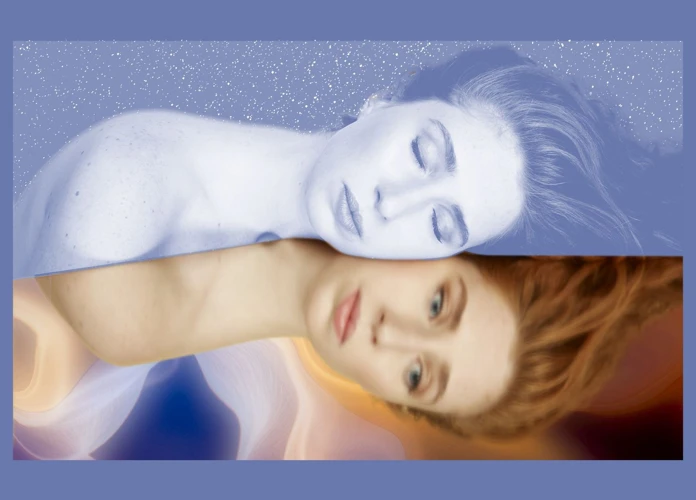The world of dreams has long fascinated and perplexed human beings. One particularly intriguing aspect of dreaming is the phenomenon known as lucid dreaming. The concept of lucid dreaming has captured the imaginations of artists, writers, and scientists alike, as it offers a unique opportunity to explore the depths of the subconscious mind and tap into a wellspring of creativity. In this article, we will delve into the impact of lucid dreaming on creative expression, exploring the definition, occurrence, and benefits of lucid dreaming, as well as its connection to artistic endeavors. Additionally, we will examine practical techniques for utilizing lucid dreaming in creative expression, real-life examples of artists who have incorporated lucid dreaming into their work, and scientific studies that shed light on the profound impact of lucid dreaming on creative expression. So prepare to embark on a journey into the realms of dreams and creativity, as we unravel the mysteries and uncover the hidden potential of lucid dreaming.
Understanding Lucid Dreaming
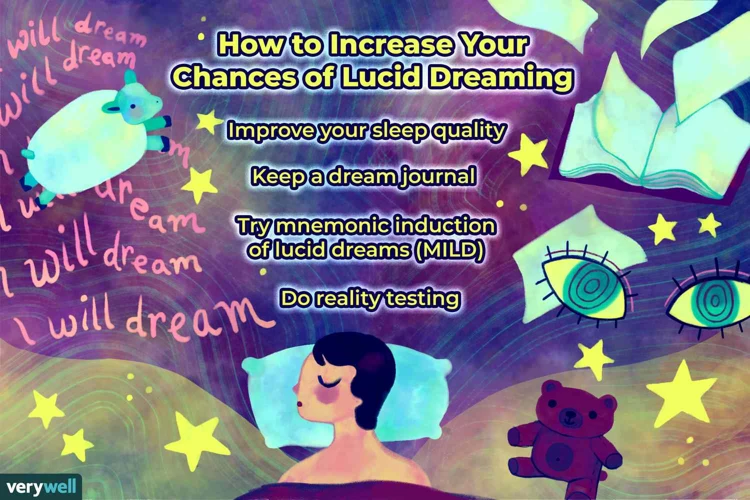
Lucid dreaming is a fascinating and enigmatic state of consciousness that offers individuals the remarkable ability to become aware and control their dreams (source). In lucid dreams, dreamers are not passive observers but active participants, able to navigate and shape their dream world as if it were their waking reality. This extraordinary phenomenon occurs when the dreamer realizes they are dreaming and retains this awareness throughout the dream experience. Lucid dreaming provides a platform for exploring the depths of human imagination and exploring artistic visions, while offering a powerful tool for enhancing creative expression. Through lucid dreaming, individuals can heighten their senses, access their subconscious mind, and experience emotional catharsis (source). By understanding the intricacies of this extraordinary state of consciousness, we can unlock the immense potential it holds for artistic inspiration and expression.
Definition of Lucid Dreaming
Lucid dreaming refers to a state of consciousness in which the dreamer becomes aware that they are dreaming while still within the dream itself. It is a unique and extraordinary experience that allows individuals to have a level of control and self-awareness within their dreams that is typically absent in regular dreams. In a lucid dream, the dreamer recognizes the dream-like nature of their surroundings, the events that are unfolding, and even their own presence within the dream. This state of awareness can vary in intensity, with some individuals having a partial awareness of the dream state and others achieving a full and vivid realization of their dreaming experience. Lucid dreaming can occur spontaneously or be induced through various techniques and practices. It offers a remarkable opportunity to explore and interact with the dream world in ways that are not possible in waking life. By developing the ability to recognize and navigate lucid dreams, individuals can harness the power of their subconscious mind, tap into their creative potential, and delve into the depths of their imagination.
How Lucid Dreaming Occurs
When it comes to understanding how lucid dreaming occurs, it is essential to delve into the intricate workings of the dream state. Lucid dreaming typically happens during the rapid eye movement (REM) stage of sleep, which is characterized by heightened brain activity and vivid dreaming. During REM sleep, the brain’s prefrontal cortex, responsible for self-awareness and decision-making, becomes more active. This increased activation allows individuals to become aware of the dream state and recognize that they are, in fact, dreaming. The exact mechanisms behind this phenomenon are still not fully understood by scientists, but there are several theories. One theory suggests that lucid dreaming arises from the activation of the dorsolateral prefrontal cortex, which is involved in executive functions and self-reflective awareness. Another hypothesis proposes that lucidity occurs when the brain is able to establish communication between the dreaming and waking states. This communication allows for cognitive abilities, such as critical thinking and reasoning, to be carried over into the dream world. Additionally, external stimuli and reality checks, such as pinching oneself or checking the time, can trigger lucidity by prompting individuals to question their reality. The process of how lucid dreaming occurs remains a topic of ongoing scientific investigation, with researchers continuously uncovering new insights into the fascinating world of conscious dreaming.
Benefits of Lucid Dreaming
Lucid dreaming offers a range of remarkable benefits that extend beyond the realm of ordinary dreams. Here are some notable advantages of engaging in this unique state of consciousness:
- Enhanced problem-solving skills: Lucid dreaming allows individuals to confront and solve challenges within the dream world, which can also translate to improved problem-solving abilities in waking life.
- Creative inspiration: Lucid dreams provide an abundant source of inspiration for artists, as they offer the opportunity to explore surreal landscapes, engage with fantastical characters, and experience unique scenarios that can be transformed into creative works.
- Overcoming fears and phobias: Through lucid dreaming, individuals can confront and conquer their fears in a safe and controlled environment, facilitating personal growth and self-improvement.
- Enhanced self-awareness: Lucid dreaming fosters a deep sense of self-awareness as individuals become more attuned to their thoughts, emotions, and actions within the dream, which can also transfer to increased self-awareness in their waking lives.
- Improved mental well-being: The ability to experience emotional catharsis within lucid dreams can contribute to improved mental well-being, offering a space for emotional release and healing.
- Physical skill improvement: Research suggests that mentally rehearsing physical skills within a lucid dream can have a positive impact on skill development and performance in waking life, making it a valuable tool for athletes and performers.
These benefits highlight the transformative power of lucid dreaming and emphasize its potential to positively impact various aspects of a person’s life, including creativity, problem-solving, self-development, and overall well-being.
Exploring the Connection between Lucid Dreaming and Creativity
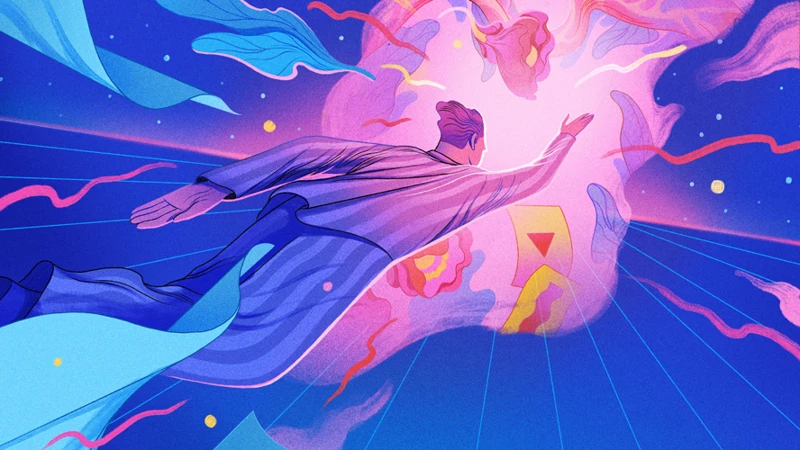
The fascinating connection between lucid dreaming and creativity has captivated researchers and artists alike. One of the key ways in which lucid dreaming enhances creativity is through enhanced imagination and visualization. In a lucid dream, individuals have the ability to create and manipulate vivid dream scenarios, allowing for the exploration of unique landscapes, characters, and narratives. This heightened imaginative capacity can result in a wealth of innovative ideas and concepts that can be translated into various forms of artistic expression. The access to the subconscious mind that lucid dreaming grants can be a profound source of inspiration for artists. By delving into the depths of the subconscious, artists can tap into a wellspring of untapped potential, unearthing hidden emotions, memories, and ideas. The cathartic nature of lucid dreaming also contributes to the creative process, allowing artists to experience and process intense emotions within the safety and confines of the dream world. The connection between lucid dreaming and creativity is multifaceted and offers artists a unique vehicle for self-expression and exploration.
Enhanced Imagination and Visualization
In the realm of creative expression, enhanced imagination and visualization play a vital role in bringing ideas to life in a tangible form. Lucid dreaming has the potential to greatly amplify these cognitive abilities. When in a lucid dream, individuals have a heightened sense of imagination, enabling them to visualize intricate details and concepts with remarkable clarity and vividness. This heightened imaginative capacity allows artists, writers, and creators to explore and experiment with ideas that may have seemed impossible or elusive in their waking state. The dream world becomes a limitless canvas for imagination to run wild. Artists can conjure up fantastical landscapes, imaginary characters, and unique scenarios that may serve as a wellspring of inspiration for their artistic endeavors. Visualization becomes a powerful tool for artists as they can mentally rehearse artistic performances, experiment with various visual compositions, and even “try out” different artistic styles while in a lucid dream. This enables them to refine their skills, expand their creative horizons, and push boundaries that they may not have thought possible. The enhanced imagination and visualization experienced in lucid dreams can have a profound impact on an artist’s creative expression, fostering innovation, originality, and the ability to translate abstract ideas into concrete artistic forms.
Access to Subconscious Mind
Accessing the subconscious mind is one of the powerful benefits of lucid dreaming. During a lucid dream, individuals have the unique opportunity to delve into the depths of their subconscious, a vast reservoir of thoughts, memories, and emotions. This access enables individuals to tap into a wealth of creative potential that may be otherwise untapped in their waking life. Through lucid dreaming, one can explore buried memories, unresolved emotions, and hidden desires, all of which can serve as rich fodder for artistic expression. By engaging with the subconscious mind in a lucid dream, individuals can gain deeper insights into their own psyche and use these revelations to deepen their creative work. Whether it’s uncovering forgotten experiences, confronting deep-seated fears, or accessing untapped reserves of inspiration, the ability to access the subconscious mind through lucid dreaming offers a direct pathway to enhanced creative expression.
Emotional Catharsis
Emotional catharsis is a profound and transformative aspect of lucid dreaming that can have a significant impact on an individual’s creative expression. During a lucid dream, the dreamer has the opportunity to confront and process deep-seated emotions, unresolved traumas, or subconscious issues. This therapeutic aspect of lucid dreaming allows for the release of pent-up emotions and the exploration of inner conflicts in a safe and controlled environment. Lucid dreaming provides a unique platform for individuals to experience and express their emotions in a vivid and immersive manner. By actively engaging with their emotions within the dream state, artists and creators can gain a deeper understanding of their own emotional landscapes, which can greatly enrich their creative work. The intense emotional experiences in lucid dreams can serve as a source of inspiration, feeding the creative process with raw, authentic, and often subconscious emotions. This emotional catharsis through lucid dreaming can be particularly beneficial for artists seeking to explore and express complex themes or tap into a deeper well of creativity. Whether it is the creation of visual art, writing, music, or performance, the emotional release provided by lucid dreaming can serve as a catalyst for profound and impactful artistic expressions.
The Role of Lucid Dreaming in Various Forms of Art

Lucid dreaming plays a significant role in various forms of art, unlocking new dimensions of creative expression and allowing artists to tap into their innermost thoughts and emotions. In writing and storytelling, lucid dreaming provides a limitless playground for creating intricate narratives and vivid characters that transcend the boundaries of reality. Artists who engage in drawing and painting can use lucid dreams as a source of inspiration, capturing dreamscapes and surreal imagery that push the boundaries of imagination. Similarly, music composition can benefit from lucid dreaming, as musicians can tap into the rich auditory landscapes of dreams, creating melodies and harmonies that evoke otherworldly emotions. In the realm of performing arts, lucid dreaming offers actors and dancers the opportunity to rehearse and experiment with movements, unlocking new levels of creativity and expression. Through these various artistic forms, lucid dreaming serves as a catalyst for innovation, pushing boundaries, and enabling artists to bring their wildest visions and deepest emotions to life.
Writing and Storytelling
Lucid dreaming has a profound impact on the world of writing and storytelling. It serves as a fertile ground for inspiration, allowing writers to tap into their subconscious mind and unleash a flood of ideas and creativity. When lucid dreaming, authors can vividly experience their story settings and characters, providing them with a firsthand understanding of the narrative they wish to convey (source). Through the power of lucid dreams, writers can visualize and explore different plotlines, experiment with unique perspectives, and create intricate and detailed worlds that captivate readers. Lucid dreaming also aids in overcoming writer’s block, as it provides a wellspring of ideas, allowing authors to effortlessly generate unique storylines and character arcs (source). The ability to control the dream world enables writers to play with unconventional narratives and challenge traditional storytelling norms, resulting in innovative and thought-provoking works. Lucid dreaming allows authors to experience powerful emotions within their dreams, which can be channeled into their writing, creating authentic and compelling storytelling that resonates with readers on a deep level. The surreal and limitless nature of lucid dreams opens up boundless opportunities for writers to explore their imagination and bring their literary visions to life (source). Whether it’s crafting intricate plots, developing complex characters, or finding inspiration in the dream world, lucid dreaming empowers writers to push the boundaries of their creativity and create truly extraordinary stories.
Drawing and Painting
Drawing and painting are art forms that rely heavily on visual imagination and creativity. Lucid dreaming can have a profound impact on the artistic process for both skilled artists and beginners alike.
- Enhanced Visual Imagery: During lucid dreams, the dreamer is immersed in a vivid and lifelike environment where anything is possible. This heightened visual imagery can serve as a wellspring of inspiration for artists, enabling them to visualize intricate details, vibrant colors, and imaginative scenes that can be incorporated into their artwork.
- Exploring Unconventional Ideas: Lucid dreaming provides artists with the freedom to explore unconventional and abstract concepts, pushing the boundaries of their creative thinking. In the dream world, artists can experiment with unique perspectives, surreal landscapes, and fantastical creatures, allowing their imagination to soar beyond the limitations of reality.
- Improved Observation Skills: Lucid dreaming can enhance an artist’s ability to observe and capture the world around them. Dreamers often pay close attention to details in their dreams, and this keen observation can translate into improved observational skills in waking life. When artists incorporate these refined observation skills into their drawing and painting, they can create more realistic and detailed artwork.
- Emotional Expression: Like any form of art, drawing and painting are powerful mediums for emotional expression. Lucid dreaming offers artists a unique opportunity to tap into their emotions and subconscious mind, providing them with a rich source of inspiration for expressing complex feelings and experiences through their artwork.
Whether it’s through the incorporation of dream-inspired elements, the exploration of unconventional ideas, or the deep emotional connection made possible by lucid dreaming, artists can greatly benefit from incorporating the experiences and visions from their dreams into their drawing and painting. So if you’re a budding artist looking to expand your creative horizons, consider delving into the realm of lucid dreaming and unlocking new artistic possibilities.
Music Composition
Music composition is a realm where lucid dreaming can play a transformative role. When engaged in a lucid dream, musicians have access to an infinite array of melodies, harmonies, and rhythms that can inspire unique compositions. The dream state provides a free-flowing and unrestricted creative space where musical ideas can manifest spontaneously and effortlessly. In a lucid dream, musicians can even have the opportunity to collaborate with legendary composers or virtuoso musicians who may exist only in the realm of the dream world. The vividness and intensity of the dream experience can infuse compositions with profound emotion and depth, capturing the essence of ethereal dreamscapes. Musicians who harness the power of lucid dreaming for composition often wake up with melodies or chord progressions that they can then translate into their waking lives. The ability to explore limitless musical possibilities in dreams allows composers to push the boundaries of their creative expression and experiment with new genres, styles, and techniques. Lucid dreaming can serve as a wellspring of inspiration and innovation for musicians, helping them unlock new sonic landscapes and elevate their compositions to unprecedented heights.
Performing Arts
Performing arts, including theater, dance, and music, have a deep connection to the realm of dreams. Lucid dreaming can play a significant role in shaping and enhancing performances. For actors and performers, lucid dreaming can be a valuable tool for rehearsing performances and exploring different character portrayals. By mentally rehearsing their roles in their dreams, performers can gain a deeper understanding of their characters, experiment with various techniques, and refine their skills (source). Lucid dreaming allows performers to push the boundaries of their creativity and broaden their range of expression.
In the world of dance, lucid dreaming can be a source of inspiration, helping dancers discover new movements, fluidity, and innovative choreography. By entering a lucid dream state, dancers can explore the limitless possibilities of their bodies and experiment with unique movements that may not be accessible in waking life (source). This newfound freedom of expression can lead to groundbreaking performances and artistic breakthroughs.
For musicians, lucid dreaming can serve as a wellspring of creativity. In the dream state, musicians may encounter melodies, harmonies, and rhythms that they have never conceived of before. These musical ideas can be brought back into the waking world and integrated into compositions, resulting in truly original and captivating pieces (source). Lucid dreaming also allows musicians to improve their technical skills, as they can mentally practice complex passages, instrument techniques, and even conduct virtual performances in their dreams.
Performing artists can also utilize lucid dreaming to overcome stage fright and performance anxiety. By visualizing successful performances in their dreams, artists can boost their confidence and develop a positive mindset. Lucid dreaming can help performers confront their fears, work through potential challenges, and ultimately deliver more captivating and authentic performances.
Lucid dreaming opens up a world of possibilities for performing artists. Whether it’s through mental rehearsal, inspiration for new movements or melodies, or overcoming performance anxiety, lucid dreaming can profoundly impact and enhance the realm of performing arts, allowing artists to dive deeper into their craft and explore new avenues of creative expression.
Practical Techniques for Utilizing Lucid Dreaming in Creative Expression
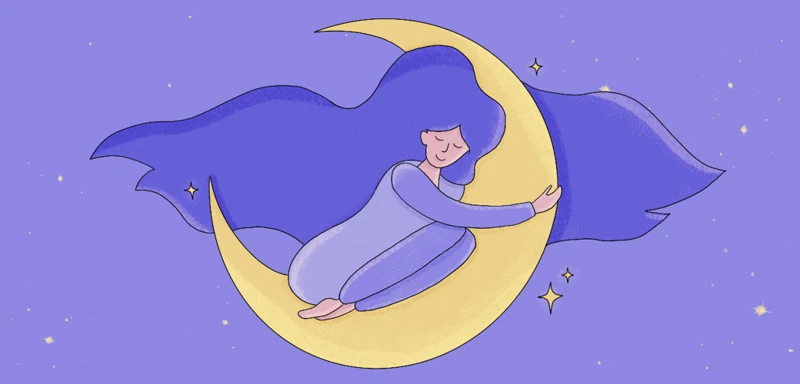
Utilizing lucid dreaming in creative expression involves a variety of practical techniques that can be employed to enhance artistic endeavors. One effective method is the use of reality checks and dream journaling (source). Reality checks involve regularly questioning one’s reality throughout the day, which can carry over into the dream state and trigger lucidity. Keeping a dream journal allows individuals to document their dreams in detail, aiding in dream recall and facilitating the exploration of dream themes and symbols. Another technique is incubating dreams for artistic inspiration (source). This involves setting an intention before sleep to dream about a specific creative project or seeking guidance on a creative problem. Mental rehearsal is also a valuable technique for artists (source). By visualizing and rehearsing a performance or artistic creation in the lucid dream state, individuals can gain confidence and refine their skills. These practical techniques empower artists to harness the power of lucid dreaming and unlock a realm of limitless creativity and inspiration.
Reality Checks and Dream Journaling
Reality checks and dream journaling are two practical techniques that can be utilized to harness the power of lucid dreaming in creative expression. Reality checks involve regularly questioning one’s state of reality throughout the day (source). By consistently questioning the nature of your surroundings and performing reality checks, such as counting your fingers or trying to push your hand through a solid object, you train your mind to be more alert and aware. This heightened state of awareness can then spill over into your dream state, increasing the likelihood of becoming lucid.
Dream journaling, on the other hand, involves keeping a detailed record of your dreams on a regular basis (source). Upon waking up, take a few moments to jot down the vivid details, emotions, and any recurring themes or symbols you may have encountered in your dream. This practice serves multiple purposes. Firstly, it helps to improve dream recall, allowing you to remember your dreams more clearly. Secondly, it can help you identify patterns or recurring elements in your dreams, which can be valuable in recognizing when you are in a dream state. Lastly, keeping a dream journal serves as a source of inspiration for artistic expression. The unique scenarios, vivid imagery, and surreal experiences that are often found in dreams can spark creativity and provide a wellspring of ideas for various forms of art.
By consistently practicing reality checks and maintaining a dream journal, individuals can enhance their ability to achieve lucidity in dreams and tap into the limitless creative potential that lucid dreaming offers. These techniques serve as valuable tools for artists and creatives who wish to incorporate their dream experiences into their artistic expressions.
Incubating Dreams for Artistic Inspiration
Incubating dreams for artistic inspiration is a technique that involves consciously directing the themes and content of dreams to generate specific ideas and concepts for artistic endeavors. This process starts with setting clear intentions before going to sleep, focusing on the desired artistic project or goal. To enhance the incubation process, artists can engage in activities such as visualizing the desired outcome, creating mood boards or sketches, or even immersing themselves in related artwork or literature. By priming the mind and directing attention towards specific creative objectives, artists can increase the likelihood of their dreams reflecting those desired themes. Upon waking, it is crucial to keep a dream journal nearby to jot down any dream fragments or vivid imagery immediately. The journal helps capture and preserve the ephemeral nature of dreams, allowing artists to revisit and draw inspiration from their dream experiences later. By regularly practicing dream incubation, artists can tap into the depths of their subconscious mind, harnessing the wealth of creative insights and unique ideas that emerge during the dream state. This technique not only offers a rich source of artistic inspiration but also serves as a bridge between the dream world and the creative process, facilitating a deeper connection to one’s artistic practice.
Mental Rehearsal for Artistic Performances
Mental rehearsal is a powerful technique utilized by many artists to enhance their performances (source). In the context of lucid dreaming, mental rehearsal involves visualizing and practicing artistic performances within the dream state. This technique allows artists to explore their creativity and experiment with different techniques, movements, and expressions in a safe and controlled environment. With lucid dreaming, artists can simulate the exact conditions of a live performance, from the stage setup to the audience’s reaction, providing an immersive experience that can help refine their craft (source). By mentally rehearsing their artistic performances, artists can improve their confidence, precision, and overall mastery of their craft. Lucid dreams offer artists a unique opportunity to engage in trial and error, pushing the boundaries of their abilities and exploring new creative heights. Through repeated mental rehearsal in lucid dreams, artists can develop muscle memory and fine-tune their performances, resulting in a more polished and impactful artistic expression when they take the stage in reality.
Real-Life Examples of Artists Incorporating Lucid Dreaming into their Work
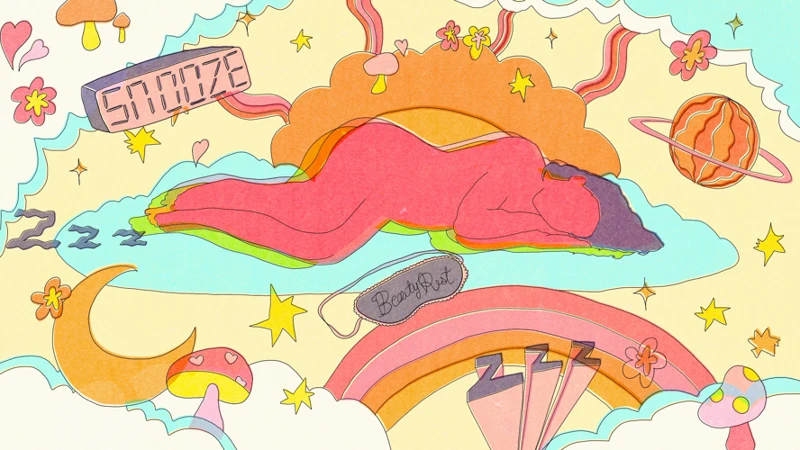
Throughout history, numerous artists have drawn inspiration from their lucid dreams, infusing their work with the surreal and imaginative elements that can only be found in the realm of dreams. Writers and poets, such as Edgar Allan Poe and Samuel Taylor Coleridge, have incorporated dream-like themes and symbolism into their literary works, blurring the lines between reality and the subconscious (source). Visionary artists like Salvador Dalí and Hieronymus Bosch have captured the strange and fantastical landscapes of their dreams on canvas, bringing forth their inner visions into the physical world (source). Musicians and composers, like Paul McCartney and Wolfgang Amadeus Mozart, have been known to use their lucid dreams as a source of inspiration for melodies and musical ideas (source). Actors and performers, such as Jim Carrey and Sarah Bernhardt, have tapped into their dreams to fuel their creative performances, allowing them to embody and express characters with a heightened sense of authenticity (source). These real-life examples serve as a testament to the profound influence that lucid dreaming can have on artistic expression, pushing the boundaries of imagination and creating transcendent works that leave a lasting impact on audiences.
Famous Writers and Poets
The world of literature has been greatly influenced by lucid dreaming, with many famous writers and poets drawing inspiration from their vivid dreams. One such renowned author is Mary Shelley, who famously conceived the idea for her novel Frankenstein in a vivid dream. Similarly, Samuel Taylor Coleridge’s famous poem “Kubla Khan” was inspired by a dream, as he claimed to have experienced a vision of the poem in its entirety. Additionally, the surrealist movement in literature, spearheaded by writers like André Breton and Salvador Dalí, was heavily influenced by the dreamlike imagery and symbolism that permeate their works. Lucid dreaming gives writers and poets the ability to tap into their subconscious mind, leading to enhanced creativity, vivid imagery, and the exploration of profound themes. By harnessing the power of lucid dreams, these artists have contributed unique and groundbreaking works to the world of literature. The impact of lucid dreaming on famous writers and poets is a testament to the profound influence that dreams can have on artistic expression.
Visionary Artists
Visionary artists have long been captivated by the realm of dreams and the possibilities it presents for creative expression. Through lucid dreaming, these artists have found a means to tap into their subconscious minds and explore uncharted territories of imagination and inspiration. Utilizing their lucid dream experiences, visionary artists are able to bring forth vivid and fantastical imagery that transcends traditional artistic boundaries. They draw upon the surreal landscapes, fantastical creatures, and extraordinary events that they encounter in their lucid dreams to create visually striking and thought-provoking artworks. These artists often employ a diverse range of mediums such as painting, sculpture, digital art, and mixed media to convey their visionary experiences. The vibrant colors, intricate details, and otherworldly elements found in their works serve as a direct reflection of the extraordinary visions that they witness within their lucid dreams. Through their creative endeavors, visionary artists invite viewers to enter into their dreamscapes and witness the profound beauty and boundless imagination that can be unlocked through lucid dreaming. They challenge conventional notions of reality and invite their audience to contemplate the deeper, spiritual dimensions of existence. Visionary art serves as a bridge between the subconscious and the conscious, seamlessly blending the realms of dreams and waking life. It invites us to explore the depths of our own imagination and to question the limitations we impose on ourselves and our creative potential. By embracing the power of lucid dreaming, visionary artists open up new possibilities for artistic expression and forge a path towards transcendent creativity.
Musicians and Composers
Musicians and composers have long been intrigued by the potential of lucid dreaming to ignite their creative process and inspire new musical compositions. The experience of lucid dreaming can be particularly powerful for musicians, as it allows them to explore melodies, harmonies, and rhythms within the vivid and limitless realm of dreams. By tapping into their lucid dreams, musicians can access a wellspring of musical ideas that may not have emerged in their waking state.
One way in which lucid dreaming can impact musicians and composers is through the exploration of new sounds and melodies. In a lucid dream, musicians can experiment with unique and innovative combinations of tones, instruments, and arrangements. They can effortlessly create elaborate compositions in their dream state and then recall and replicate them once they wake up. This process of harnessing their lucid dreams for musical inspiration enables musicians to push the boundaries of their creative potential and develop truly original and groundbreaking pieces.
Additionally, lucid dreaming can also provide musicians with a space for improvisation and experimentation. In a lucid dream, musicians can freely explore various musical techniques, styles, and genres without any constraints or limitations. They can become the conductor of their dream orchestra, directing the flow of music and exploring different musical pathways in real-time. This sense of freedom and experimentation allows musicians to break away from conventional structures and unlock new artistic possibilities.
Lucid dreaming can also serve as a source of emotional and psychological inspiration for musicians. Dreams have the ability to evoke deep emotions and experiences, and by incorporating these dream-related emotions into their compositions, musicians can create deeply evocative and moving pieces of music. Whether it’s capturing the euphoria of flying in a dream or conveying the sense of loss in a dream encounter, musicians can draw upon the intense emotions experienced in their lucid dreams to infuse their compositions with a profound and personal depth.
Lucid dreaming offers musicians and composers a unique opportunity to explore and expand their creative horizons. Through the exploration of new sounds and melodies, the freedom for improvisation and experimentation, and the incorporation of dream-related emotions, musicians can tap into the vast reserves of artistic inspiration that lucid dreaming provides. By integrating the experiences from their dream world into their musical endeavors, musicians and composers can create captivating, innovative, and emotionally resonant compositions that captivate audiences and transcend traditional musical boundaries.
Actors and Performers
Actors and performers have a unique relationship with lucid dreaming, as their creative expression often relies on their ability to embody different characters and bring them to life on stage or screen. Lucid dreaming offers a valuable tool for actors and performers to explore the depths of their own emotions and tap into the subconscious mind to enhance their craft. During lucid dreams, actors can actively engage with various scenarios, stepping into the shoes of different characters and practicing their roles in a simulated environment. This allows them to experiment with different acting techniques, test out new approaches to characterization, and refine their performances. Additionally, lucid dreaming can help actors overcome stage fright and performance anxiety by providing a space for mental rehearsal and visualization of successful performances. By harnessing the power of lucid dreaming, actors and performers can unlock their creative potential, expand their range of expression, and cultivate a deeper understanding of the human experience. It offers a unique opportunity to explore the intricacies of the characters they portray and infuse their performances with authenticity and depth.
Scientific Studies on the Impact of Lucid Dreaming on Creative Expression
Scientific studies have delved into the impact of lucid dreaming on creative expression, shedding light on the fascinating relationship between dreams and artistic endeavors. Researchers have explored how lucid dreaming can enhance creativity and inspire innovative thinking. For example, a study conducted by Harvard psychologist Deirdre Barrett found that lucid dreamers exhibited increased problem-solving abilities and were more likely to have creative breakthroughs compared to non-lucid dreamers. This suggests that lucid dreaming can serve as a valuable tool for artists seeking to overcome creative blocks and tap into new realms of imagination. Another study conducted at the University of Lincoln found that lucid dreamers displayed higher levels of artistic creativity and were more likely to engage in artistic activities during their waking hours. The research suggests that the creative inspiration experienced in lucid dreams can carry over into waking life, influencing artistic pursuits and fostering a greater sense of artistic expression. Studies have also shown that lucid dreamers often report a higher level of self-awareness and introspection, which can potentially contribute to a deeper connection with their artistic vision and creative process. These scientific findings highlight the profound impact that lucid dreaming can have on the creative mind and emphasize its potential as a catalyst for artistic expression and innovation.
Conclusion
In conclusion, lucid dreaming has a profound impact on creative expression, offering individuals a gateway to explore the depths of their imagination and tap into their artistic potential. By becoming aware and in control of their dreams, individuals can enhance their ability to visualize and create, leading to enhanced artistic skills and a greater sense of inspiration. Lucid dreaming also provides a unique opportunity to access the subconscious mind, unlocking hidden insights and ideas that can be translated into various forms of art. The emotional catharsis experienced in lucid dreams can further fuel creativity, allowing individuals to channel their emotions into their artistic endeavors. Throughout history, many renowned artists, writers, poets, musicians, and performers have embraced lucid dreaming as a tool for creative expression, incorporating the insights and experiences from their dreams into their work. Scientific studies have also shown the positive impact of lucid dreaming on creativity, providing evidence for the profound connection between the dream world and artistic expression. As our understanding of lucid dreaming continues to evolve, so too does our appreciation for its potential in shaping and nurturing artistic pursuits. By harnessing the power of lucid dreaming, artists can unlock new levels of inspiration, visualization, and emotional depth, taking their creative expression to extraordinary heights. So, embrace the realm of dreams, explore the avenues of lucid dreaming, and let your imagination soar in the pursuit of artistic fulfillment.
Frequently Asked Questions
What is lucid dreaming?
Lucid dreaming is a state of consciousness in which the dreamer becomes aware that they are dreaming while still immersed in the dream experience.
How does lucid dreaming occur?
Lucid dreaming can occur spontaneously, but it can also be induced through various techniques such as reality checks, dream journaling, and intentional dream incubation.
What are the benefits of lucid dreaming?
The benefits of lucid dreaming include enhanced creativity, increased self-awareness, improved problem-solving skills, and the opportunity to explore and fulfill desires that may be impossible in waking life.
Can anyone learn to lucid dream?
Yes, with practice and consistency, anyone can learn to lucid dream. It may take time and effort, but the ability to have lucid dreams is accessible to most individuals.
Can lucid dreaming improve artistic skills?
Yes, lucid dreaming has the potential to enhance artistic skills by providing a platform for imagination, visualization, and experimentation in a vivid and immersive dream world.
Are there any risks associated with lucid dreaming?
For the majority of individuals, lucid dreaming is considered safe. However, some people may experience sleep disturbances or confusion upon waking from a lucid dream.
Can lucid dreaming be used as a form of therapy?
Yes, lucid dreaming has been explored as a therapeutic tool for addressing nightmares, trauma, and phobias. It can also be used for personal growth and self-reflection.
Can lucid dreaming improve problem-solving skills?
Yes, lucid dreaming can enhance problem-solving skills as it allows individuals to consciously explore different scenarios, test out solutions, and gain insight into real-life challenges.
Are there techniques to increase the likelihood of having lucid dreams?
Yes, there are various techniques that can increase the likelihood of having lucid dreams, such as reality checks, keeping a dream journal, practicing meditation, and setting intentions before sleep.
Can lucid dreaming be controlled?
While lucid dreams can be influenced and directed to some extent, complete control over every aspect of a dream may not always be possible. It largely depends on the individual’s level of lucidity and dream control skills.

